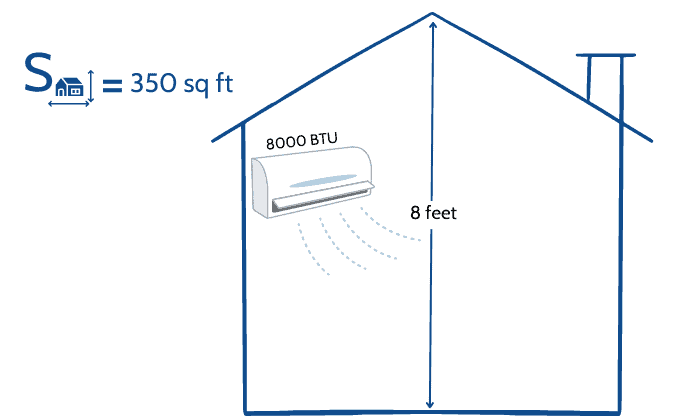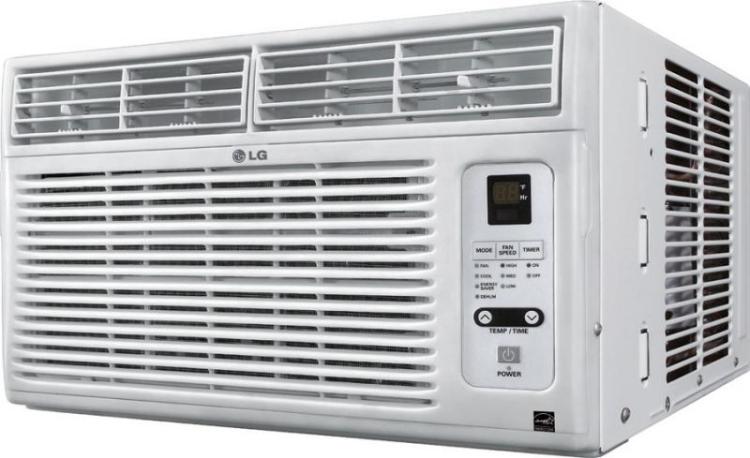8 000 Btu Air Conditioner Room Size
:max_bytes(150000):strip_icc()/air-conditioning-chart-1152654_final-02-c37c8b4fdf08432baf378e8f0cb9d8e0.jpg)
Many homeowners experience the frustration of a room that just won't cool down effectively, despite having an air conditioner running full blast. This is especially common with window units, and pinpointing the cause can seem daunting. But don't worry, often the problem is simpler than you think. This guide will walk you through troubleshooting your 8,000 BTU air conditioner to determine why it's not keeping your room at the desired temperature.
Is Your 8,000 BTU AC Up to the Task?
The first question to ask: Is your 8,000 BTU air conditioner the right size for your room? An 8,000 BTU unit is generally designed to cool a room between 300 and 350 square feet. If your room is larger than this, the AC will struggle to keep up, especially on hot days. Consider the following:
- Measure your room: Multiply the length and width of the room to get the square footage.
- Consider other factors: High ceilings, direct sunlight, and poor insulation all increase the cooling load. A room with a lot of windows facing the sun will require more cooling power than a shaded room of the same size.
- Rule of thumb: For every foot over 8 feet of ceiling height, add 10% to the room's square footage for cooling calculation purposes.
If your room is significantly larger than 350 square feet, your 8,000 BTU unit is likely undersized and will never effectively cool the space. In this case, you'll need a larger AC unit or explore alternative cooling solutions.
Troubleshooting Steps: When Your AC Isn't Cooling Properly
Let's assume your 8,000 BTU AC is appropriately sized for your room. If it's still not cooling properly, follow these steps:
Step 1: Basic Checks (No Tools Required)
Start with the simplest checks first. These don't require any tools and can often reveal the culprit.
- Air Filter: A dirty air filter is the most common cause of poor AC performance. A clogged filter restricts airflow, making the unit work harder and less efficiently. Check the filter and clean or replace it if it's dirty. Most window AC units use disposable filters that should be replaced every 1-3 months, depending on usage and air quality. Reusable filters should be washed with mild soap and water and allowed to dry completely before reinstalling.
- Airflow Obstructions: Ensure nothing is blocking the airflow around the AC unit, both inside and outside the room. Curtains, furniture, or debris outside can restrict airflow. Clear any obstructions.
- Unit Settings: Double-check that the AC is set to "Cool" mode and the temperature is set low enough (e.g., 65-70°F). Make sure the fan speed is set to a high setting for maximum cooling. Sometimes the unit is accidentally set to "Fan Only" which circulates air without cooling.
- Sealed Room: Ensure windows and doors are properly closed to prevent warm air from entering the room. Seal any gaps or cracks around windows or doors with weather stripping or caulk.
- Heat Sources: Minimize heat sources in the room, such as incandescent lights, computers, and other appliances that generate heat. Turn off unnecessary lights and appliances to reduce the cooling load.
- Sunlight: During the hottest part of the day, use blinds or curtains to block direct sunlight from entering the room. This can significantly reduce the heat entering the space and help the AC cool more efficiently.
After completing these basic checks, give the AC unit at least an hour to see if the cooling improves. If not, move on to the next set of checks.
Step 2: Intermediate Checks (Minimal Tools Required)
These checks require minimal tools, such as a flashlight and a thermometer.
- Coil Inspection (Inside): With the AC unit unplugged, carefully remove the front panel to access the evaporator coils (the coils inside the unit). Use a flashlight to inspect the coils for dirt, dust, or debris. If the coils are dirty, gently clean them with a brush attachment on a vacuum cleaner. Be careful not to bend the fins. Alternatively, you can purchase a coil cleaner spray specifically designed for AC units.
- Coil Inspection (Outside): Inspect the condenser coils (the coils on the outside of the unit) for dirt and debris. Clear any obstructions, such as leaves or branches. The condenser coils release heat, and if they're blocked, the AC won't cool effectively. You may need to use a garden hose (on a gentle setting) to rinse off the coils, being careful not to spray directly into any electrical components.
- Air Temperature Test: Use a thermometer to measure the temperature of the air coming out of the AC unit's vents. Compare this temperature to the temperature of the air in the room. The air coming out of the vents should be significantly cooler (at least 15-20°F cooler) than the room temperature. If the difference is less than that, it indicates a problem with the AC unit's cooling ability.
- Condensate Drain: Check the condensate drain to ensure it's not clogged. A clogged drain can cause water to back up and reduce the unit's cooling capacity. Most window units have a small drain hole on the back. You can use a small wire or pipe cleaner to clear any obstructions.
- Voltage Check (Optional - proceed with caution): If you have a multimeter and know how to use it safely, check the voltage at the outlet to ensure it's within the acceptable range (typically 110-120V). Low voltage can affect the AC unit's performance. If you are not comfortable using a multimeter, skip this step and consult with an electrician.
Remember to unplug the AC unit before performing any maintenance or cleaning that involves removing panels or accessing internal components.
Step 3: More Advanced Issues (Likely Requires Professional Help)
If you've completed the previous steps and your AC is still not cooling properly, the problem may be more complex and require professional attention.
- Refrigerant Leak: If the AC is not cooling effectively, even after cleaning the coils and ensuring proper airflow, it may have a refrigerant leak. Refrigerant leaks are difficult to detect and repair without specialized equipment. A refrigerant leak is also an environmental hazard. Contact a licensed HVAC technician to diagnose and repair the leak and recharge the system.
- Compressor Problems: The compressor is the heart of the AC unit. If it's not functioning correctly, the unit won't cool. Compressor repairs are complex and require specialized knowledge and equipment. A faulty compressor often requires replacing the entire AC unit.
- Electrical Problems: If the AC unit is not turning on or is tripping the circuit breaker, it may have an electrical problem. Electrical repairs should only be performed by a qualified electrician. Do not attempt to diagnose or repair electrical issues yourself unless you have the necessary skills and experience.
- Capacitor Issues: Capacitors help start and run the AC unit's motor. A failing capacitor can prevent the unit from starting or running properly. Testing and replacing capacitors requires knowledge of electrical safety and proper tools. Consult with an HVAC professional for capacitor-related issues.
When to Call a Professional
It's time to call a qualified HVAC technician if:
- You suspect a refrigerant leak.
- The compressor is not working.
- You have electrical problems with the unit.
- You're uncomfortable working with electrical components.
- You've tried all the troubleshooting steps and the AC is still not cooling properly.
Attempting to repair complex AC issues without the proper training and equipment can be dangerous and may void the warranty.
Preventative Maintenance for Optimal Performance
Regular maintenance can help prevent problems and extend the life of your 8,000 BTU air conditioner.
- Clean or replace the air filter regularly (every 1-3 months).
- Clean the coils at least once a year.
- Clear any obstructions around the unit.
- Consider having a professional HVAC technician inspect the unit annually.
By following these troubleshooting steps and performing regular maintenance, you can keep your 8,000 BTU air conditioner running efficiently and ensure a cool and comfortable room all summer long. Remember, safety first! When in doubt, call a professional.










